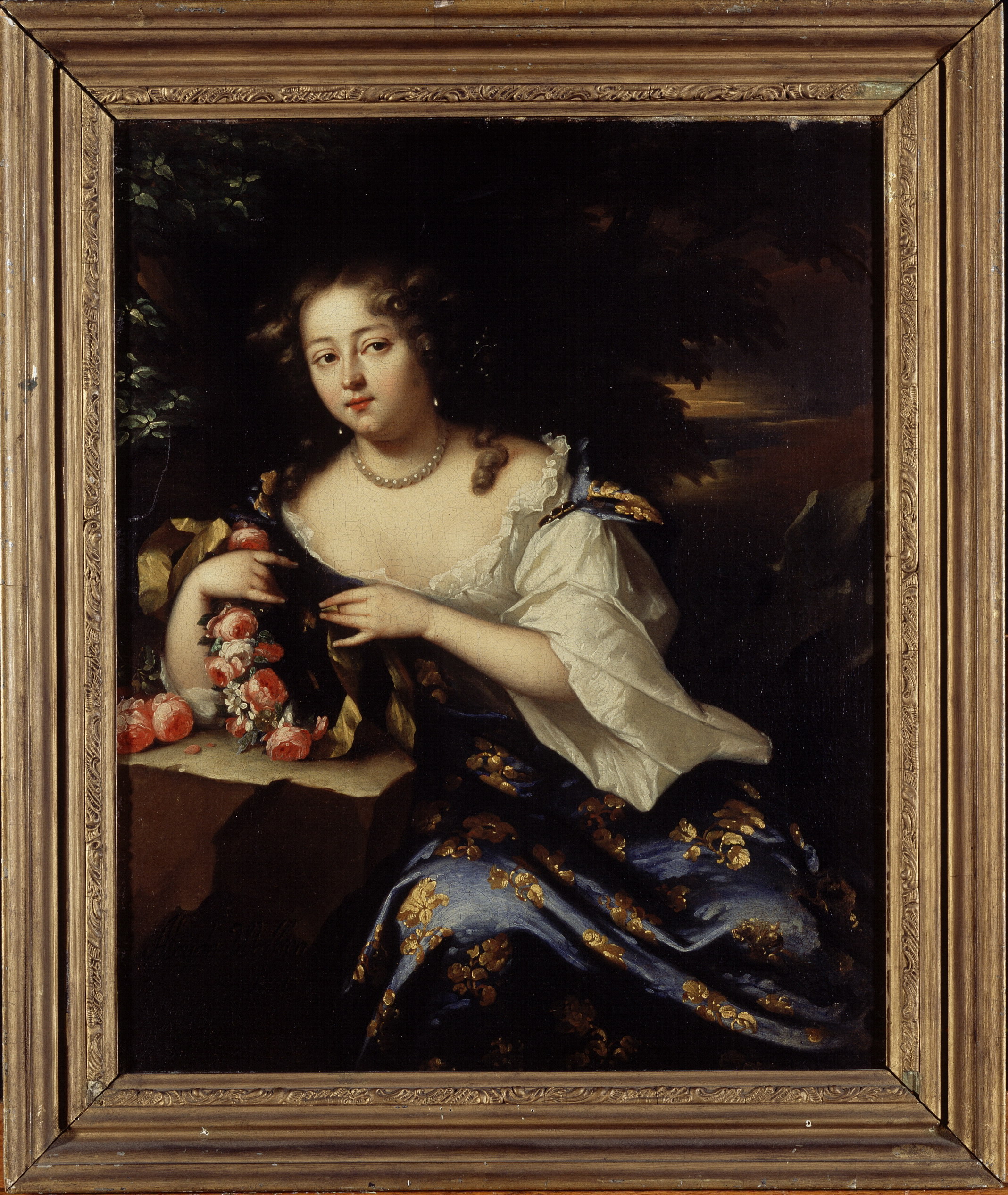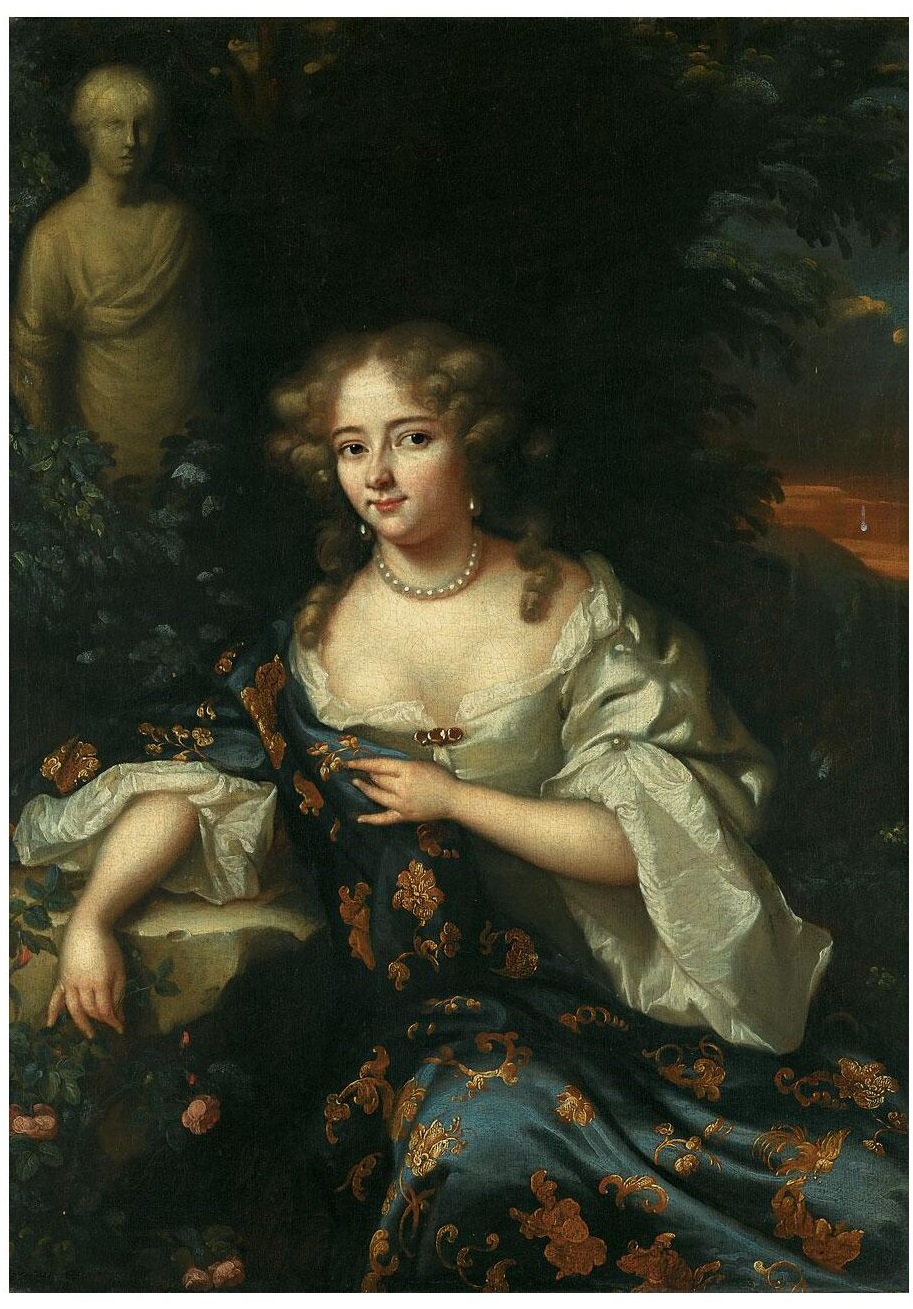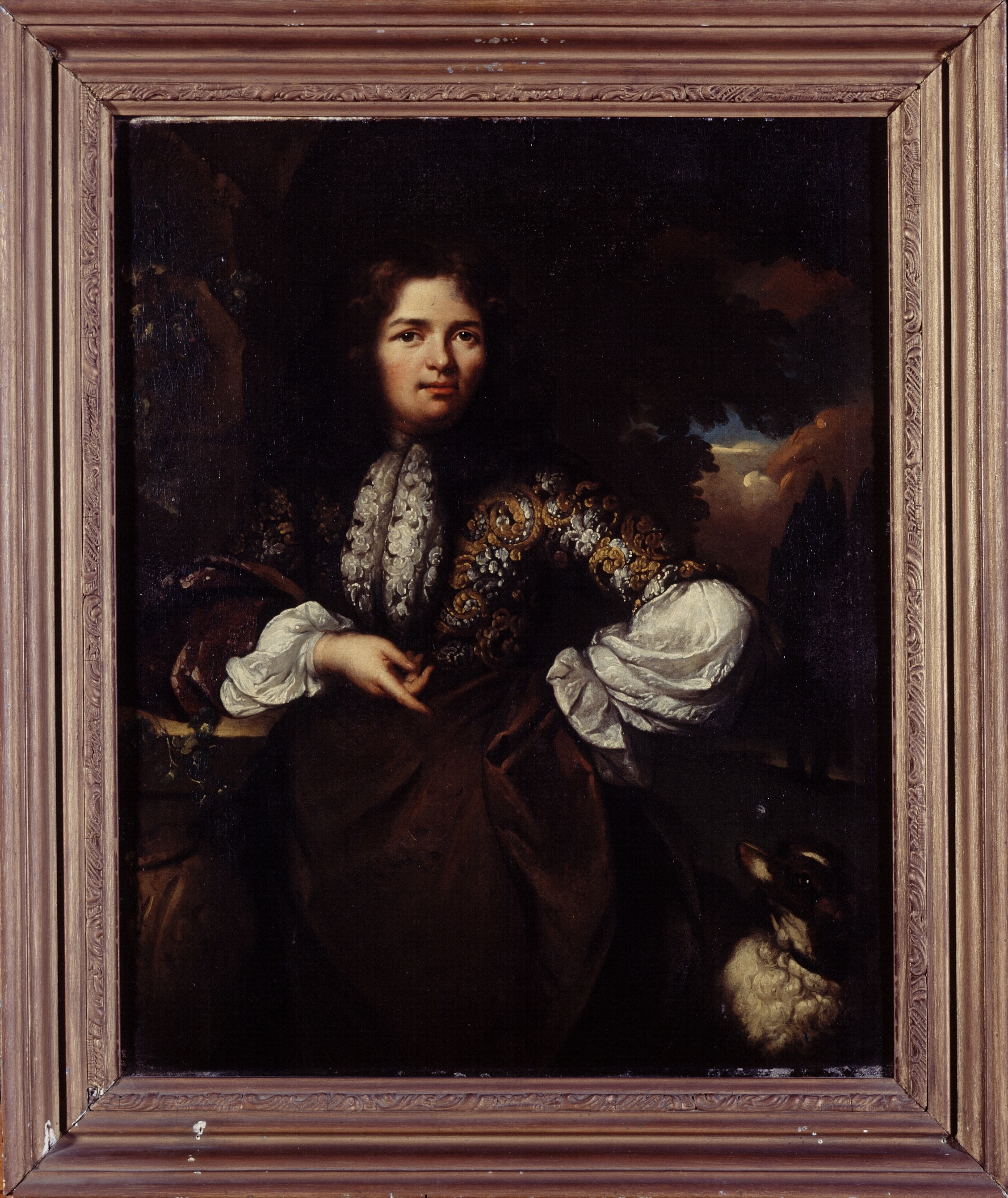Aleida Wolfsen
Active in: The Netherlands
Alternate names: Aleida Wolffsen, Aleijda Wolffsen, Aleida Wolfson, Aleijda Wolfson
Biography
Aleida Wolfsen was a Dutch Golden Age painter who was born in the town of Zwolle to a powerful family. Her father, Hendrik Wolfsen (1615-84), was wealthy and held numerous prominent positions in Zwolle: town magistrate, councilor in the Council of Brabant, and secretary of the General Accounting Office. Her mother was Aleijda Verwers (1626-65), a merchant’s daughter from Zwolle. When Aleida Wolfsen was young, her family moved to the Hague where it seems likely Aleida became a pupil of Caspar Netscher (1639-84), who himself had been a pupil of Gerard ter Borch (1617-81).
Her production consisted primarily of portraits, executed between 1670 and 1691, but she also worked on landscapes. In addition to portraits of prosperous and well-connected women, she painted children with pets as well. It seems she never painted for the art market. Instead, these portraits were commissions that primarily drew from family connections as well as from the Stadtholder’s court and the States General.
In 1667, Aleida married Pieter Soury (1645-95). She had fifteen children, but only ten of them reached adulthood. After a short time in the Hague, Aleida Wolfsen and her family moved back to Zwolle where her husband became mayor in 1667. The turbulent political climate of the Franco-Dutch War forced the family to temporarily relocate to Amsterdam; they moved back Zwolle once the conflict had ended. It has been speculated that Wolfsen later taught painting to her younger cousins, including the well-known painter Aleida Greve (1670-1742). The house that Greve had converted into the Vrouwenhuis had been originally in Wolfsen’s possession. Aleida Wolfsen died in childbirth with her fifteenth pregnancy in 1692. She and the infant were buried in one coffin in the Grote Kerk in Zwolle.
Selected Works
Circle
Daughter of
Hendrik Wolfsen (1615-84)
Daughter of
Aleijda Verwers (1626-65)
Student of
Caspar Netscher (1639–1684)
Cousin and teacher of
Aleida Greve (1670–1742)
Wife of
Pieter Soury (1645-95)
Bibliography
Bauer, Alexandra Nina. “Caspar Netscher and Late Seventeenth-Century Dutch Painting.” Oud Holland 120 (2007): 147–150.
Bredius, A. “Een en ander over Caspar Netscher.” Oud-Holland 5 (1887) 263-275.
Buijsen, Edwin and Charles Dumas. Haagse schilders in de Gouden Eeuw: het Hoogsteder lexicon van alle schilders werkzaam in Den Haag 1600-1700. The Hague: Kunsthandel Hoogsteder & Hoogsteder, 1998.
A Checklist of painters c. 1200-1976 represented in the Witt Library, Courtauld Institute of Art, London. London: Mansell, 1978.
Dumas, Charles, and Edwin Buijsen. Haagse schilders in de Gouden Eeuw: het Hoogsteder Lexicon van alle schilders werkzaam in Den Haag 1600-1700. The Hague: Kunsthandel Hoogsteder & Hoogsteder, 1998.
Greer, Germaine. The Obstacle Race: The Fortunes of Women Painters and Their Work. New York: Farrar, Straus, Giroux, 1979.
Groot, C. Hofstede de. “Caspar Netscher.” In Beschreibendes und kritisches Verzeichnis der Werke der holländischen Maler des XVII. Jahrhunderts, 322. Esslingen: Paul Neff Verlag, 1912.
Gudlaugsson, S.J. Gerard ter Borch. The Hague: Martinus Nijhoff, 1960.
Honig, Elizabeth A. “The Art of Being ‘Artistic’: Dutch Women's Creative Practices in the 17th Century.” Woman's Art Journal 22:2 (2001): 31–39.
Houck, M.E. “Mededelingen betreffende […] Wolfsen.” Verslagen en Mededelingen van de Vereeniging tot Beoefening van Overijsselsch Regt en Geschiedenis 20 (1899): 320-345.
Klarenbeek, Hanna. Penseelprinsessen en broodschilderessen: vrouwen in de beeldende kunst 1808-1913. Bussum: Thoth, 2012.
Kloek, Els, C. Peters Sengers, and E. Tobe. Vrouwen en kunst in de Republiek: een overzicht. Utrecht: Uitgeverij Verloren BV, 1998.
Leonhardt, Gustav. Het huis Bartolotti en zijn bewoners. Amsterdam: Meulenhoff, 1979.
Peacock, Martha Moffitt. Heroines, Harpies, and Housewives: Imagining Women of Consequence in the Dutch Golden Age. Boston: Brill, 2020.
Stighelen, Katlijne Van der, Mirjam Westen, and Maaike Meijer. Elck zijn waerom: vrouwelijke kunstenaars in België en Nederland 1500-1950. Ghent: Ludion, 1999.
Ten Hove, Jan. Het Vrouwenhuis te Zwolle. Zwolle: Waanders monumenten reeks, 1994.
Thieme, Ulrich and Felix Becker. Allgemeines Lexikon der bildenden Künstler von der Antike bis zur Gegenwart. Vol. 36. Leipzig: Wilhelm Engelmann, 1947.
Van der Stighelen, Katlijne, et al. Elck zijn waerom: vrouwelijke kunstenaars in België in Nederland 1500-1950. Ghent: Ludion, 1999.
Van Dijk, Lydie, and Jean Streng. Zwolle in de Gouden Eeuw. Zwolle: Stedelijk Museum, 1997.
Wieseman, Marjorie E. "Caspar Netscher and late seventeenth century Dutch painting." PhD Dissertation, Columbia University, 1991.
Wieseman, Marjorie E. Caspar Netscher and late seventeenth century Dutch painting. Doornspijk: Davaco, 2004.
Willigen, van der A. “Aleijda Wolfsen.” De Nederlandsche Spectator 20 (1867): 159.
Wolleswinkel, Egbert. “De familieportretten van mr. Jan van Heurn in 1704 (1712).” Jaarboek Centraal Bureau voor Genealogie 45 (1991): 133-162.
Wolleswinkel, Egbert. “Er was eens een penseelprinses... en zij heette Aleijda Wolfsen.” Jaarboek Die Haghe (2015): 72-95.
Zwiers, S. “‘Pro memoria:’ De aantekeningen van Hendrik Wolfsen (1615-1684).” Overijsselse Historische Bijdragen 114 (1999): 38-51.


